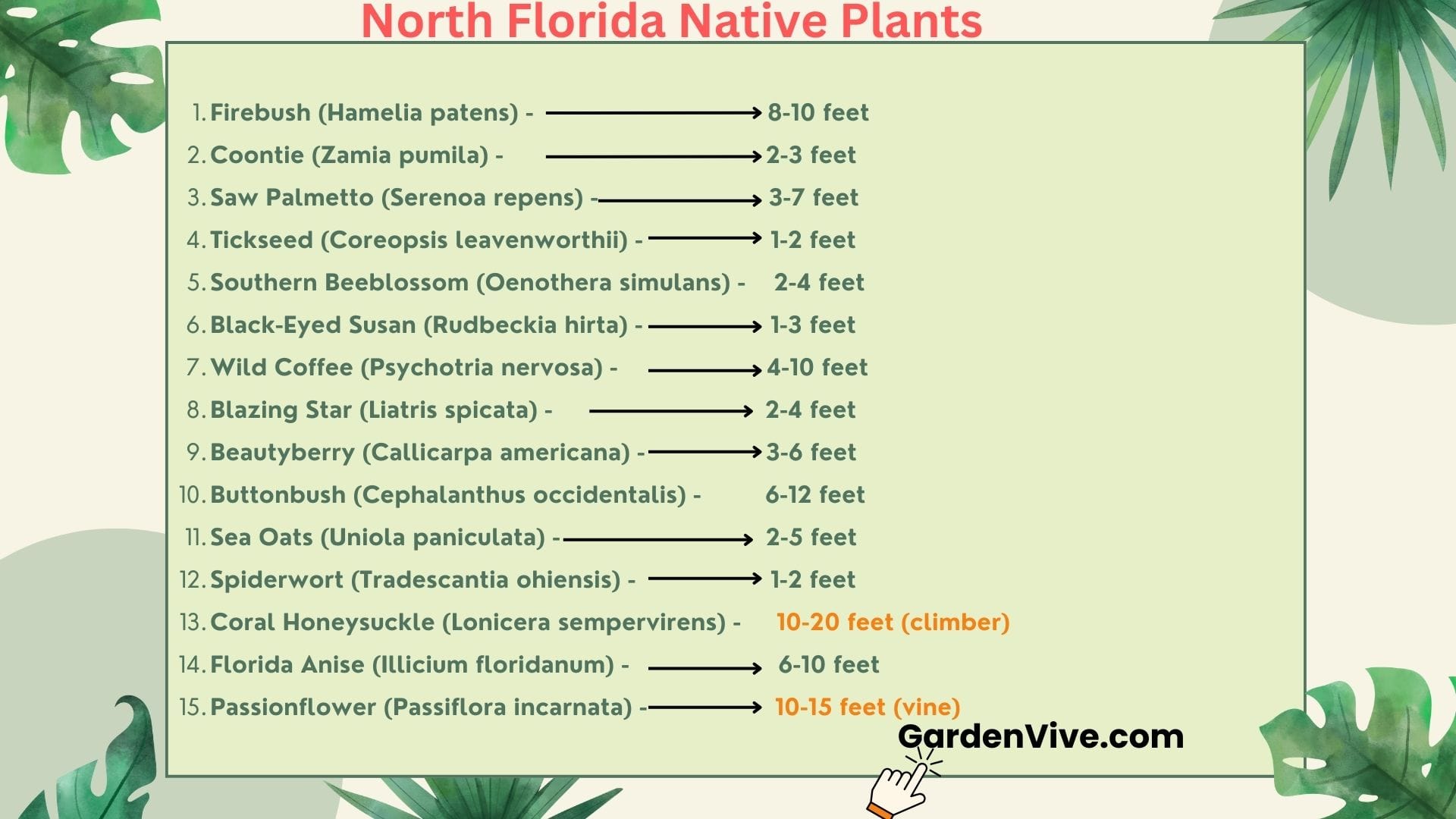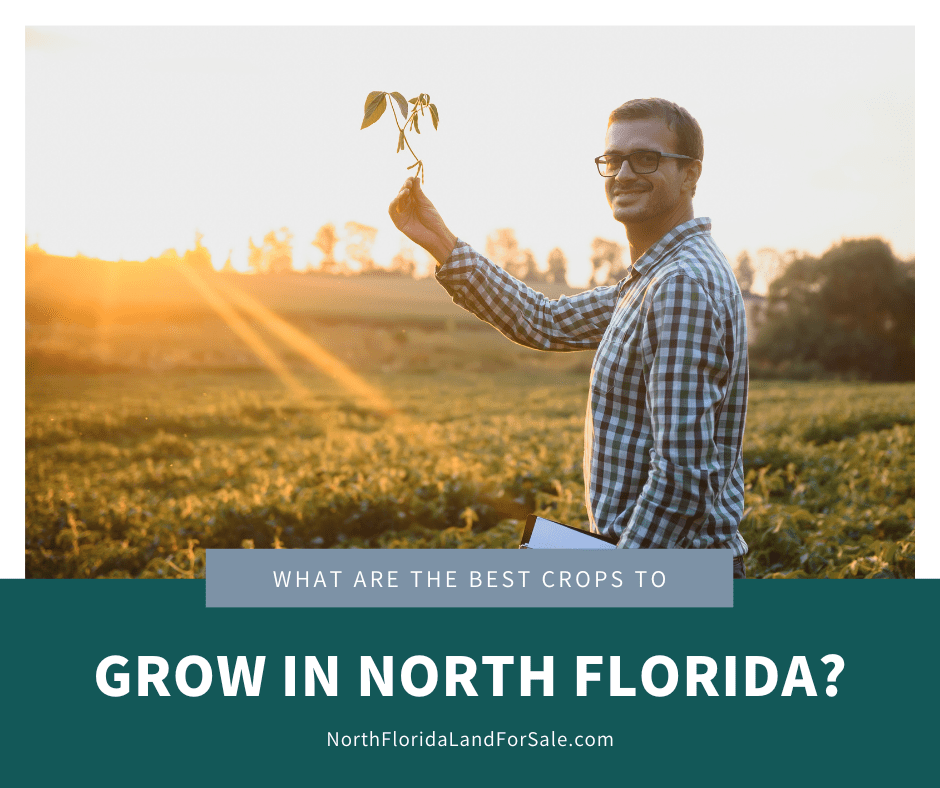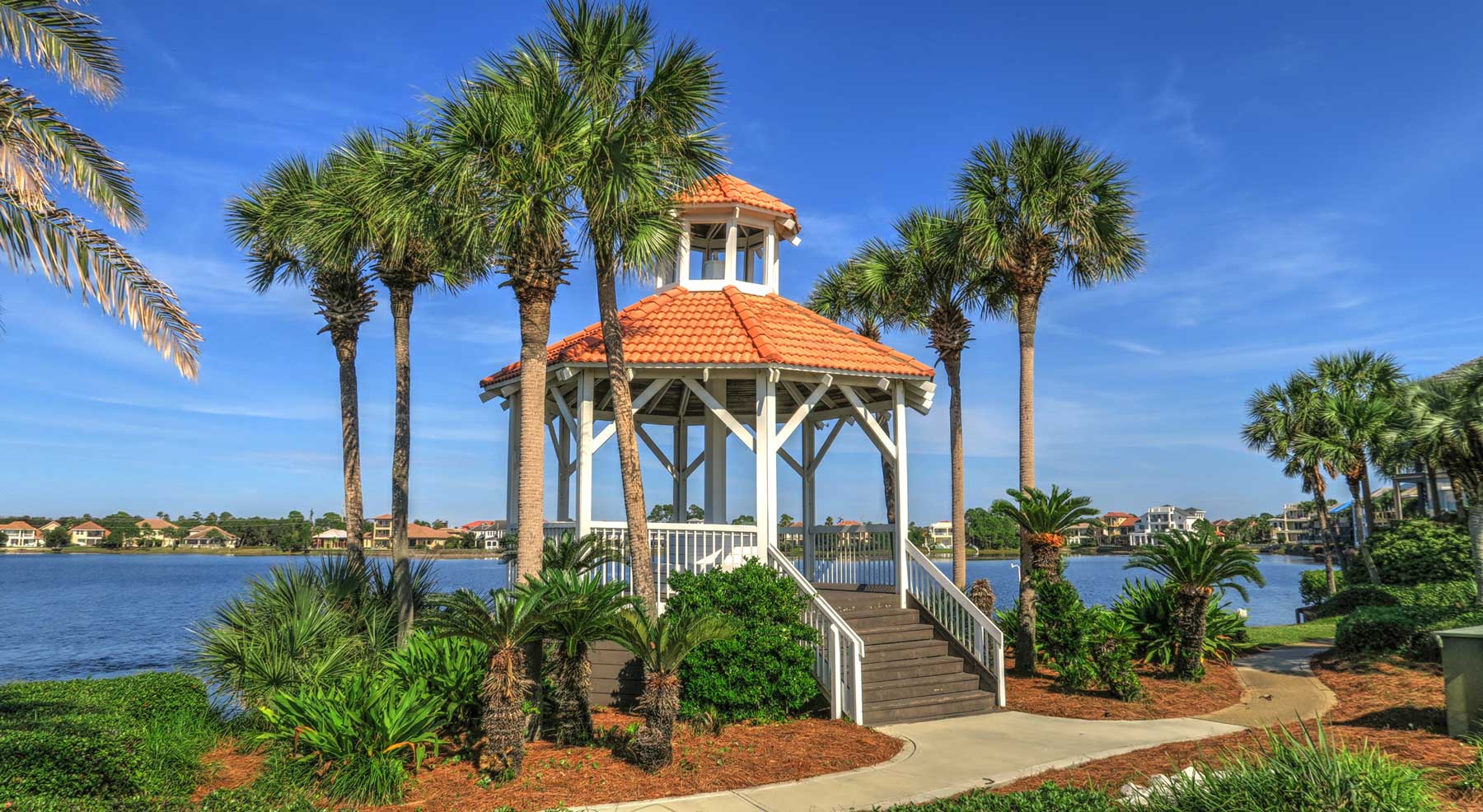If you live in North Florida, you know that choosing the right plants can make all the difference in your garden’s success. The hot sun, humidity, and occasional heavy rains mean you need plants that not only survive but thrive in these conditions.
You want greenery that looks beautiful year-round without demanding constant care. Imagine stepping outside to a vibrant, colorful garden that feels like a natural part of North Florida’s unique landscape. In this guide, you’ll discover the best plants perfectly suited for your area—plants that handle heat, resist drought, and bring life to your outdoor space with ease.
Keep reading to find the perfect green companions for your North Florida home.

Credit: gardenvive.com
Heat-tolerant Flowers
North Florida’s hot sun and humid days demand flowers that keep blooming without fuss. Heat-tolerant flowers thrive in such tough conditions. They bring bright colors and lively shapes to gardens. These plants need less water and care, making them perfect for busy gardeners. Let’s explore some of the best heat-loving flowers for North Florida.
Lantana Varieties
Lantana plants grow well in full sun and heat. Their small flowers form colorful clusters. They bloom in red, orange, yellow, and purple shades. Lantana attracts butterflies and bees, adding life to your garden. These plants resist drought once established. Lantanas also tolerate poor soil, making them easy to grow.
Hibiscus Colors
Hibiscus is a classic choice for warm climates. It produces large, bright flowers in red, pink, yellow, and white. The blooms open daily and last long in the sun. Hibiscus plants enjoy heat and humidity. They grow well in North Florida yards, providing tropical vibes. Hibiscus also attracts hummingbirds and butterflies.
Pentas Benefits
Pentas are known for their long bloom season. Their star-shaped flowers appear in red, pink, lavender, and white. Pentas handle heat and dry spells well. These plants attract butterflies and hummingbirds. Pentas are low maintenance and grow in full sun. They add color and movement to any garden space.
Salvia Features
Salvia plants produce tall spikes of flowers in blue, purple, red, or white. They thrive in hot, dry conditions and need little water. Salvia attracts pollinators, including bees and butterflies. These plants bloom from spring to fall, providing long-lasting color. Salvia’s tough nature makes it ideal for North Florida gardens.
Sunflower Growth
Sunflowers are perfect for sunny, hot spots. They grow quickly and reach impressive heights. Their large yellow flowers face the sun all day. Sunflowers need well-drained soil and regular watering at first. They attract birds and add a cheerful look to gardens. Sunflowers also provide seeds that feed wildlife and people.

Credit: northfloridalandforsale.com
Colorful Foliage Plants
Colorful foliage plants bring life and brightness to North Florida gardens. Their vibrant leaves create eye-catching displays all year. These plants thrive in the region’s warm climate. They add texture and contrast to flower beds and landscapes. Choosing plants with colorful foliage can reduce the need for constant flowering plants. They offer long-lasting beauty with less maintenance.
Crotons Patterns
Crotons feature striking, multicolored leaves. Patterns include spots, stripes, and blotches in yellow, red, orange, and green. Their bold colors brighten shady or sunny spots. Crotons grow well in North Florida’s heat and humidity. They prefer well-drained soil and regular watering. Avoid overwatering to prevent root rot. Prune to shape and encourage bushier growth. Their unique leaf shapes add interest and variety.
Bromeliads Care
Bromeliads are tropical plants with colorful, thick leaves. They come in many shapes and bright shades of red, pink, and purple. Bromeliads adapt well to North Florida gardens. They thrive in shaded areas with indirect sunlight. These plants need good air circulation and well-draining soil. Water their central cup regularly but avoid waterlogging. Bromeliads are low-maintenance and resistant to pests. They add an exotic touch to garden spaces.
Succulent Types
Succulents store water in their thick leaves, making them drought-tolerant. Common types include jade plants, aloe, and echeveria. These plants show a range of colors from green to purple and blue. Succulents prefer sunny locations and sandy, well-drained soil. They require minimal watering, especially during cooler months. Succulents add a modern and clean look to gardens. Their shapes and colors complement other foliage plants nicely.
Native And Drought-resistant Options
Native and drought-resistant plants thrive in North Florida’s hot, dry spells. These plants need less water and care, making them ideal for sustainable gardens. They support local wildlife and keep landscapes healthy and vibrant.
Choosing native plants helps gardens resist pests and diseases naturally. Drought-resistant varieties survive long dry periods with little water. This reduces garden maintenance and water bills.
Coontie Uses
Coontie is a small, evergreen shrub native to Florida. It grows well in sandy, dry soils. This plant tolerates heat and drought easily. Coontie works well as ground cover or border plants. It attracts butterflies, especially the rare Atala butterfly. Coontie’s tough leaves resist pests and need little watering. It also adds a tropical look to any garden.
Bottlebrush Qualities
Bottlebrush is a colorful shrub with bright red flowers. It blooms most of the year in North Florida. This plant thrives in full sun and dry soil. Bottlebrush attracts hummingbirds and bees, supporting pollination. Its dense branches provide shelter for small birds. The shrub tolerates salty air, perfect for coastal areas. Bottlebrush is low maintenance and drought-resistant.
Ornamental Grasses
Ornamental grasses add texture and movement to gardens. They require little water once established. Many native grasses grow well in North Florida’s climate. Muhly grass is popular for its pinkish-purple blooms. It stands tall and sways in the wind beautifully. These grasses provide habitat for birds and insects. They also prevent soil erosion and need minimal care.
Palms For Tropical Vibes
Palms bring a touch of the tropics to any North Florida garden. Their tall, graceful fronds sway gently in the warm breeze. These plants create a lush, exotic look that feels like a permanent vacation. Palms fit well in many landscape styles, from modern to classic. They also provide shade and add vertical interest.
Popular Palm Species
Sabal palmetto, also known as the cabbage palm, is a favorite. It is native to Florida and very hardy. Another popular choice is the Queen palm, which has feathery leaves and grows fast. The Pindo palm is smaller and has blue-green leaves. It produces edible fruit and tolerates cold better than many palms. The windmill palm is also cold hardy and has fan-shaped leaves. These palms thrive in North Florida’s climate and add that tropical feel easily.
Heat And Drought Tolerance
Palms do well in North Florida heat. Many species withstand strong sun and high temperatures. Once established, they need less water than other tropical plants. Their deep roots help them find moisture during dry spells. Some palms, like the Sabal palmetto, handle drought very well. This makes them perfect for low-maintenance gardens. Choose palms that fit your water availability and sunlight conditions. This ensures healthy growth and keeps your tropical vibe alive.
Low-maintenance Garden Ideas
Creating a garden that thrives with minimal effort is ideal for North Florida’s climate. Low-maintenance gardens save time, water, and money. They use plants that grow well in heat and humidity. These plants reduce the need for constant care, making gardening enjoyable and simple.
Choosing the right plants helps your garden flourish without daily attention. Native and heat-tolerant plants are perfect choices. They resist pests and diseases better than others. Let’s explore some excellent low-maintenance garden ideas for North Florida.
Rain Garden Plants
Rain gardens help manage water naturally while beautifying your yard. They use plants that thrive in wet soil but can handle dry spells. Goldenrod, swamp sunflower, and milkweed are great options. Muhly grass adds texture and color. These plants reduce erosion and attract beneficial insects.
Easy Annuals
Annuals provide quick color with little fuss. Zinnias and sunflowers grow fast and love the sun. Pentas bloom all summer and attract pollinators. Salvia stands out with its spiky flowers and drought resistance. These annuals are perfect for gardeners who want vibrant blooms without much work.
Butterfly-attracting Flowers
Butterflies bring life and color to any garden. Lantana and coneflowers are favorites for attracting butterflies. Hibiscus adds large, bright flowers that butterflies enjoy. Coreopsis blooms long and needs little care. Planting these flowers supports local wildlife and brightens your garden.

Credit: nfie.net
Frequently Asked Questions
What Is The Best Low-maintenance Landscape In Florida?
The best low-maintenance landscape in Florida uses native, heat-tolerant plants like lantana, hibiscus, pentas, and muhly grass. Rain gardens with goldenrod and swamp sunflower also reduce water needs and enhance natural beauty. These plants thrive in Florida’s heat and require minimal care.
What Is The 70/30 Rule In Gardening?
The 70/30 rule in gardening means planting 70% edible plants and 30% decorative plants for a balanced garden.
What Plants Can Survive In The Heat In Florida?
Heat-tolerant plants for Florida include lantana, hibiscus, pentas, salvia, sunflowers, crotons, bromeliads, coreopsis, coneflowers, succulents, and palms. These plants thrive in high temperatures, humidity, and require low maintenance, making them ideal for Florida’s hot climate.
What Zone Is North Florida For Planting?
North Florida falls mainly within USDA Hardiness Zones 8a to 9a. This guides planting choices for the region’s climate.
Conclusion
Choosing the right plants helps your North Florida garden thrive. Heat-tolerant options like hibiscus and lantana add bright colors. Succulents and ornamental grasses need little water and care. Native plants support local wildlife and keep your garden healthy. Keep soil moist and give plants enough sunlight.
Your garden will stay beautiful through hot, humid days. Enjoy planting and watching your space grow naturally. Simple care brings lasting beauty to your outdoor area.

